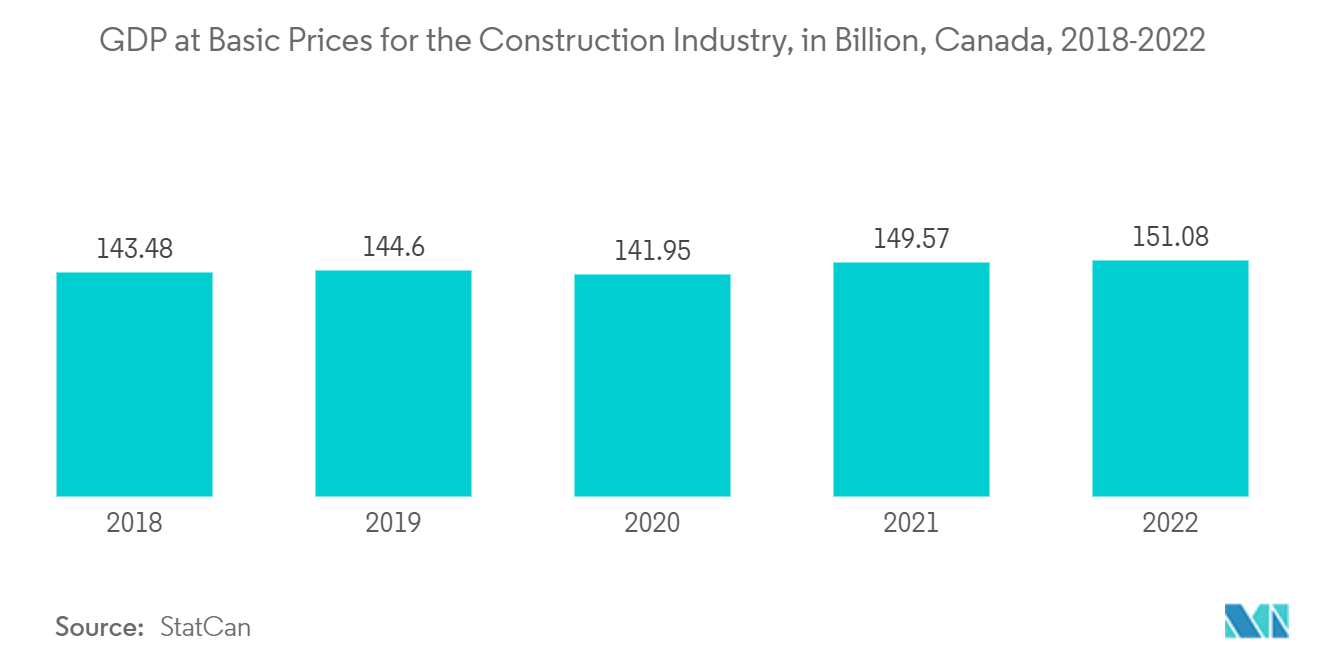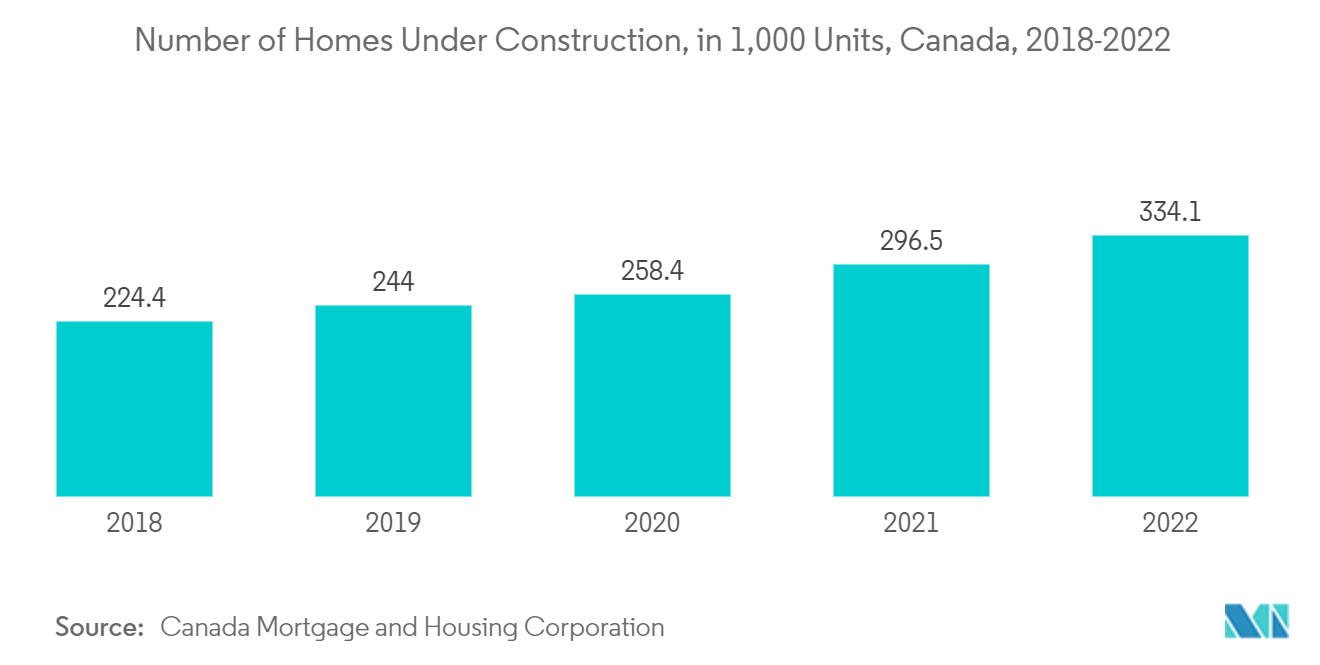Market Trends of Canada HVAC Equipment Industry
Surge in Construction Activities Driving the Market
- The construction sector is vital in driving Canada's demand for HVAC systems. With the expansion in the construction of commercial and residential buildings, the need for HVAC equipment and services has been growing consistently in the country. According to StatCan, the size of Canada's construction industry increased in 2022, recording CAD 151.08 billion (USD 112.49 billion), a significant increase from the previous year.
- The construction of some large commercial buildings has recently started in the country. According to Statistics Canada, investment in building construction stood up 0.2 percent to USD 20.9 billion in October 2022, with Ontario accounting for nearly all the gains. The residential sector edged down 0.1 percent to USD 15.4 billion, while the non-residential sector increased 0.9 percent to USD 5.5 billion. Further, commercial construction investment increased by 0.1 percent to USD 3.1 billion in November 2022 and was up 13.5 percent year over year.
- With the rise in climate change awareness, builders and regulators alike in the region are seeking to decrease the carbon footprint of commercial and industrial construction. Construction guidelines such as Net Zero have established a standard for sustainable building practices. Heavy government subsidies also make it more affordable to meet the higher upfront costs sometimes associated with green construction.
- In September 2022, Johnson Controls reduced the cost of and expanded the accessibility to residential energy efficiency for homeowners through generous financing options and rebates created to maximize recently announced savings made possible by the Inflation Reduction Act. Compared to low-efficiency systems, homeowners can decrease their heating and cooling costs by up to 50 percent using higher-efficiency HVAC equipment from Johnson Controls.

Residential Segment Holds Significant Market Share
- Given the variable climate and harsh winters, HVAC systems have emerged as a necessity in most Canadian homes. Many places in Canada face extreme heat events or heat waves involving high temperatures and high humidity. As per the preliminary figures released by the BC Coroners Service, 619 people died from severe heat in British Columbia during the summer of 2022's most extended heat wave.
- Central air conditioning is Canadians' most common way to cool residences. In recent years, as per a survey conducted by Statistics Canada, sales of electrical, plumbing, heating, and air-conditioning equipment and supplies to wholesalers amounted to approximately CAD 38.86 billion (USD 29.12 billion) recently, and it stated that around three in five Canadian households own an air conditioner; among these households, 42 percent reported holding a central air conditioner, 17 percent a stand-alone, and 3 percent another type of air conditioner.
- Also, according to A-Plus Air, around 65 percent of Canadian homes are warmed by forced-air furnaces, most of which are powered by natural gas, and others use propane or oil. Furnace-based heating systems are popular because they can heat a room quickly. With some modifications, a forced-air furnace can even be roped into function as an air filter, fresh-air ventilator, or humidifier. Another benefit is that the same duct systems can be deployed for air-conditioning during warmer summer months.
- Similarly, the Canadian government encourages consumers to buy air conditioners with Energy Star as an ENERGY STAR-certified central air conditioner uses 8 percent less energy on average than a standard model. Owing to such regulations attributed to the industry, the HVAC vendors are also offering the equipment according to government standards. Due to the RTUs rule, more vendors are concentrating on commercial buildings and sustainable skyscrapers.
- Green building standards are continually evolving. Sustainable buildings are becoming increasingly cheaper to maintain. HVAC systems are expected to gain a considerable boost in the adoption rate with the massive growth in the adoption of green buildings in the near future. According to CMHC, the number of dwelling units under construction in Canada in December of 2022 was approximately 334,100.
- For instance, in May 2022, FortisBC Energy Inc. installed high-efficiency gas heat pumps in 20 homes in the Lower Mainland and Southern Interior. This is the first unit installed in British Columbia as part of the FortisBC pilot program. With the potential to cut the power needed for space and water heating by up to 50 percent, lower greenhouse gas (GHG) emissions, operate in colder winter conditions and exceed 100 percent efficiency, this technology is expected to have the potential to help customers reduce their monthly bills and contribute to achieving the province's climate action goals.
- Moreover, in November 2022, the Minister of Immigration, Refugees and Citizenship announced a USD 250 million asset in the Oil to Heat Pump Affordability (OHPA) Grant, a renewed stream to add to the existing Canada Greener Homes Initiative. The program is expected to help more households switch to affordable and reliable electric heat pumps instead of expensive heating oil. The OHPA Grant builds on the USD 250 million announced in September 2022 to make home heating more affordable and reduce pollution by helping households move to electric heat pumps.

